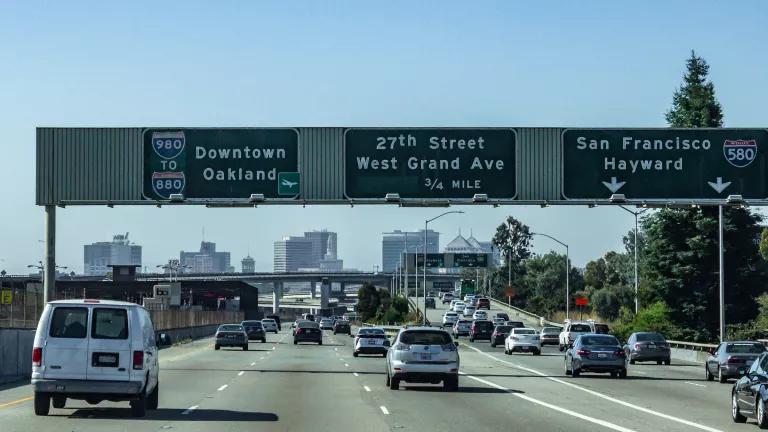Over the next ten years, California's Low Carbon Fuel Standard (LCFS), a program requiring the oil industry to cut its carbon pollution and to increase the use of clean fuels, could triple the use of alternative fuels from today's levels. That's according to a report by Promotum, California's Low Carbon Fuel Standard: Evaluation of the Potential to Meet and Exceed the Standards, commissioned by the Natural Resources Defense Council (NRDC), the Union of Concerned Scientists (UCS), and the Environmental Defense Fund (EDF). The report provides an evaluation of how the standard will expand the growth of known, existing low-carbon fuels and technologies.
How Can We Meet the LCFS?
The study's authors find that the LCFS, which requires the oil industry and other fuel providers to reduce the carbon footprint of transportation fuels by 10 percent by 2020, can be achieved through existing fuels and technologies. The industry can accomplish this by supplying greater volumes of clean alternative fuels including lower-carbon biodiesel and renewable-based diesel, biomethane, electricity, and ethanol. Alternative fuel producers who can reduce their carbon footprint even further through improved production practices and switching to lower-carbon feedstocks are also rewarded under the performance-based standard. Finally, because the program is flexible and does not pick technology winners, even oil companies can reduce their own carbon footprint through greater use of renewable energy at refineries, energy efficiency, or other innovative technologies.
Even Greater Pollution Reductions Can be Achieved Beyond 2020
The report further finds that LCFS provides fuel producers with a sufficiently strong incentive to reduce their carbon footprint and ultimately exceed the standard. For example, under a middle-of-the road case, Promotum finds a biodiesel producer utilizing recycled waste grease could reduce carbon pollution by 90 percent and generate $1.20 per gallon in additional value under the program, thereby resulting in expanded production of a low carbon fuel. Similarly, a petroleum refinery could cut their emissions through energy efficiency and receive enough value under the program to more than double their payback period for such investments. All told, sufficient incentives are in place to extend the support a steady increase in the requirements from a 10 percent requirement by 2020 to a 15 percent requirement by 2025.
Meeting a 15 percent requirement by 2025 will result in over 180 million metric tons of carbon dioxide (MMT CO2e) avoided over the next ten years, or the equivalent of taking nearly 4 million passenger vehicles off the road over the same timeframe.
The Oil Industry Can Reduce Its Own Carbon Footprint and Invest in Alternative Fuels
Among the key findings of the study: The oil industry can achieve a significant portion of the standard by reducing the carbon footprint at petroleum refineries as well as at crude oil production facilities. Just as alternative fuel companies have reduced their carbon intensity, the petroleum sector has great potential to reduce its footprint directly through energy efficiency improvements and the integration of renewable power and heating in the petroleum refining process. The Promotum study estimates these three measures alone will result in a 1.5 percent reduction in carbon-intensity across petroleum-based gasoline and diesel by 2020, growing to a 3 percent reduction by 2025.
The LCFS Will Triple the Use of Alternative Fuels by 2025
In line with Governor Jerry Brown's goal of cutting California's petroleum use in half by 2030, the LCFS will be a core strategy to diversify the transportation energy mix. Promotum estimates the LCFS can double the use of alternative fuels to 14 percent of the transportation energy mix by 2020 and nearly triple it to 20 percent by 2025 versus today.
Regulatory Certainty is the Key Driver to Move Forward
The report finds that regulatory certainty and stability is critical in order for the LCFS to achieve a 10 percent reduction by 2020 and a 15 percent level by 2025. As the California Air Resources Board readopts the program this year, the agency can strengthen the program and achieve greater carbon pollution reductions by establishing longer-term regulatory certainty. A stable, consistent standard to at least 2025 will provide the necessary signal to companies and investors to expand the supplies of low carbon fuels.



